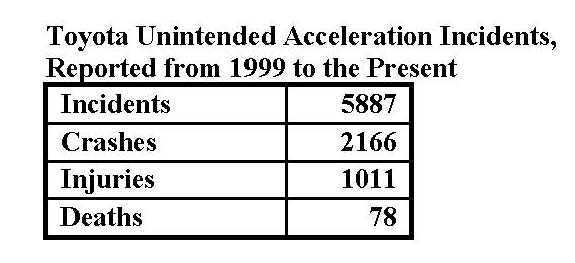Toyota has never had any good choices in extricating itself from the Sudden Unintended Acceleration problem it has been in for a year and counting. (Except admit the problem, work diligently to resolve it, take your lumps and move on.) But as many a public relations expert has opined already, they have won themselves a place in the pantheon of business school case studies in the “What-not-to-Do” category.
The streak continues. We’ve noticed a dribbling of press releases from Toyota dealerships touting the NHTSA interpretation of the Toyota black box data as proof that there is nothing wrong with their products. These headlines and sub-heads left us gob-smacked: Continue reading
